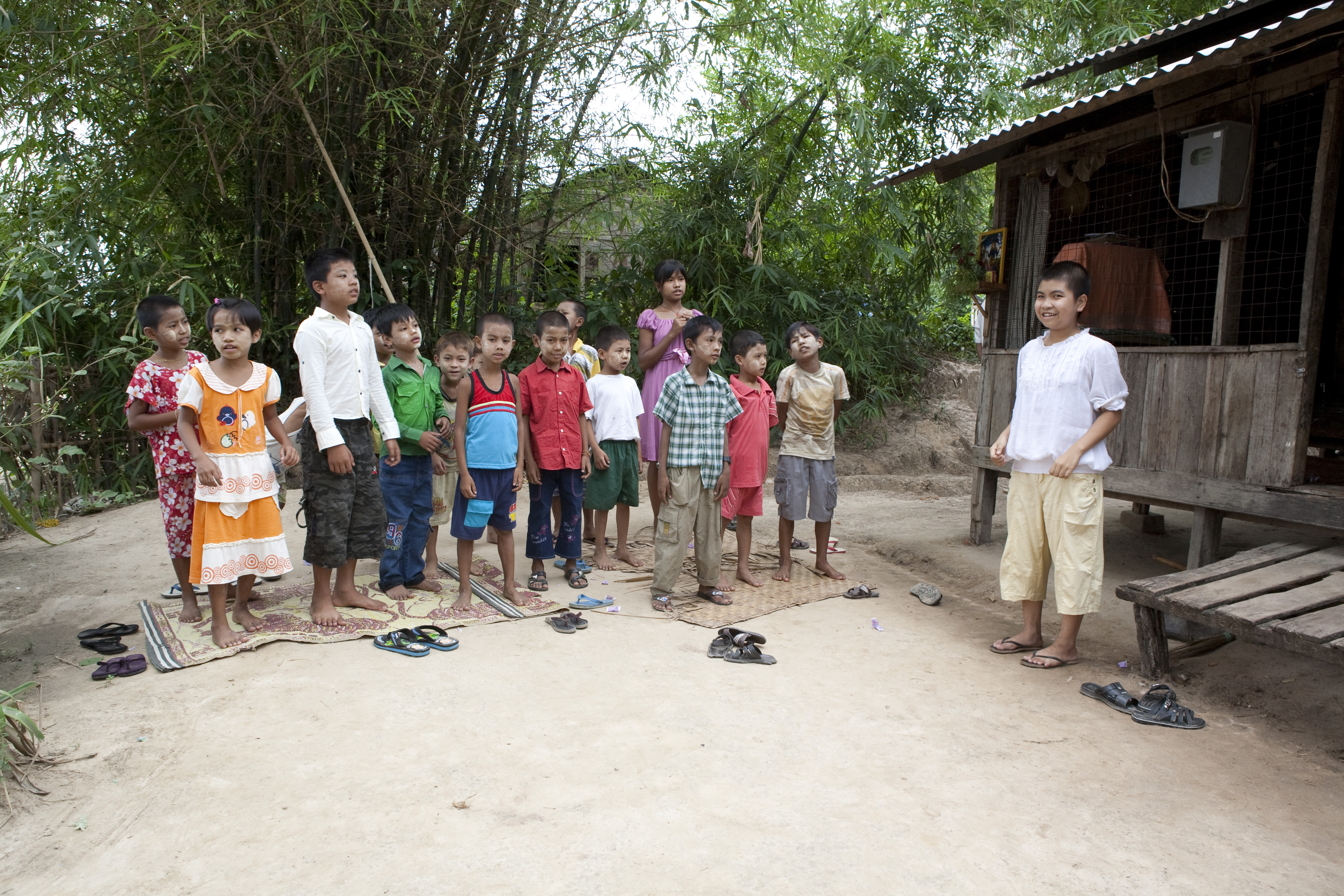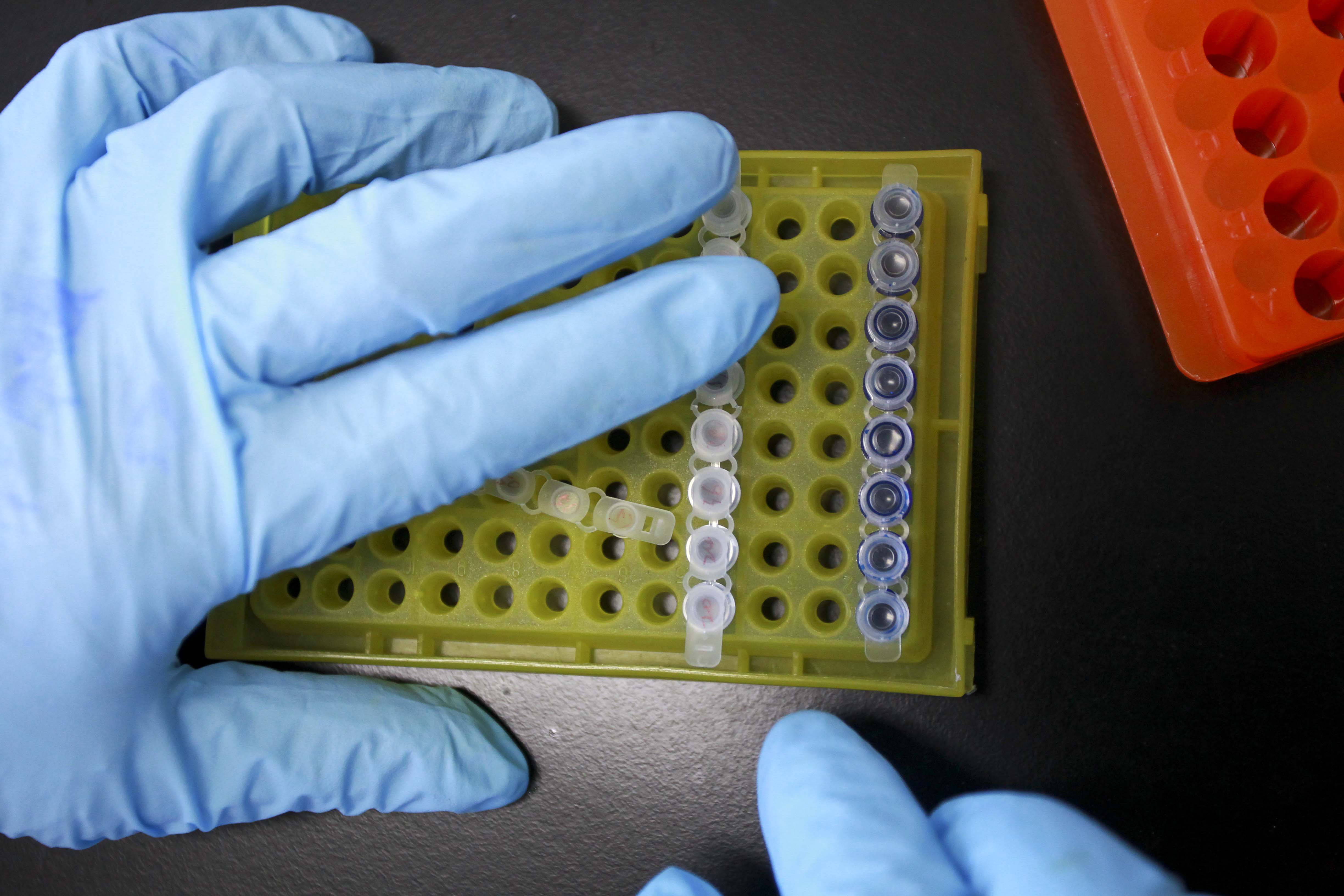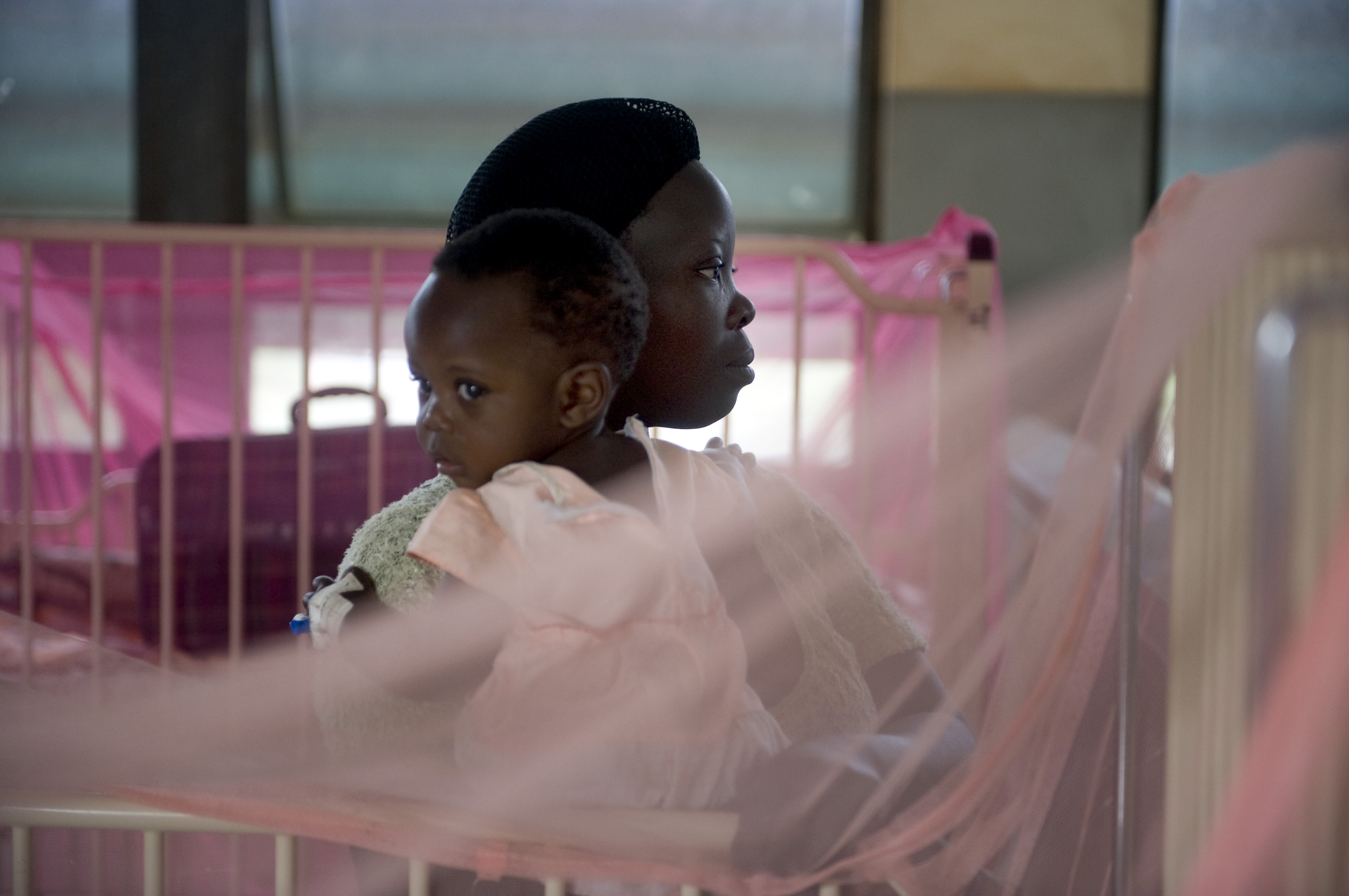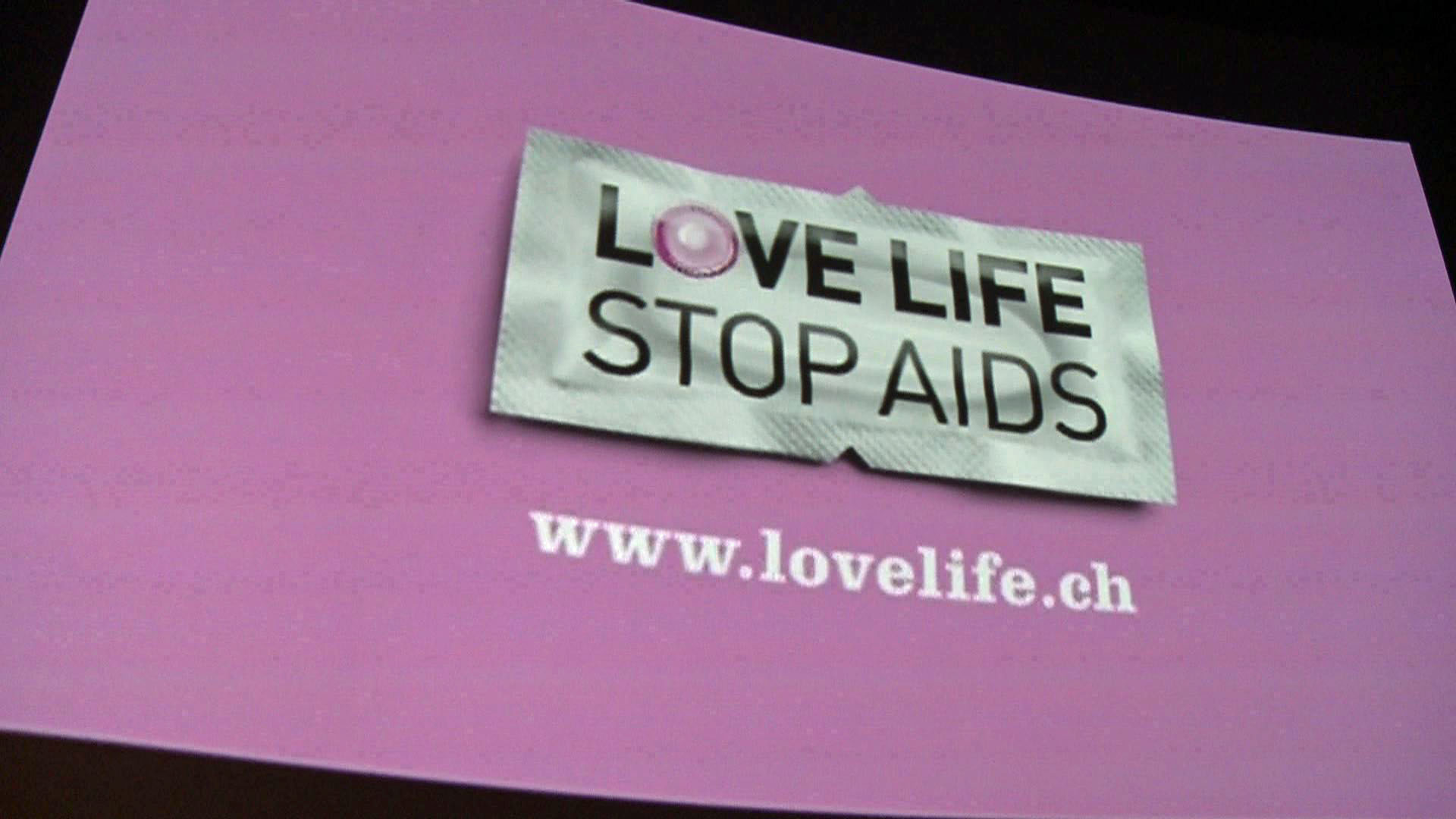HIV sufferers learn why it’s good to talk

The Swiss organisation FXB is convinced that the best way to fight HIV is to discuss it openly. It has therefore created self-help groups in Myanmar to help people with HIV, the virus that causes Aids.
On the floor of Ma San San’s modest home, there’s hardly anywhere to sit. Some 15 people, most of them women, have huddled round a wooden post supporting the roof. They wait in silence.
For fortysomething Ma San San and her guests, Sunday is the most important day of the week: it’s when they can discuss the problem that unites them, HIV.
“The aim of these meetings is to discuss problems linked to health and to learn to live with the disease,” Kathy Shein, responsible for the Geneva-based non-governmental organisation (NGO) in Myanmar, told swissinfo.ch.
In 1992, FXB became the first NGO to broach the issue of Aids in the former British colony.
After an initial rehabilitation programme directed at a few girls forced to work in brothels on the Thai border, FXB’s work has widened to cover everyone with HIV. Today, thousands of prostitutes, homosexuals, orphans and other adults benefit from the antiretroviral treatment and advice provided by the organisation.
Self-help
Among the most effective projects are the self-help groups, such as the one run by Ma San San.
“At first we would meet in FXB’s offices in the city centre. More and more people would come, but many people struggled to get there because they didn’t have the money for transport,” Shein says.
Having completed the training organised by FXB, Ma San San formed her group on the outskirts of Yangon.
“When we started back in 2009, there were ten of us. Now we’re more than 50,” she says.
Across the country, a total of more than 5,000 people take part in the programme.
TB problem
At the end of 2011, an estimated 216,000 people with HIV lived in Myanmar, according to UNAIDS, the United Nations programme on HIV/Aids.
This figure is relatively contained, however, when one considers that in neighbouring Thailand, which has a similar population, more than half a million people have HIV.
Nevertheless, the situation in Myanmar was worrying, warned Médecins Sans Frontières (MSF), a Geneva-based NGO for medical humanitarian aid.
Only a third of those in need of treatment have access to medicine, it pointed out, adding that the prevalence of tuberculosis (the leading cause of death among those with HIV) is almost triple the global average.
What’s more, Myanmar is one of the countries with the highest rate of multi-drug-resistant tuberculosis.
In a report published earlier in the year, MSF emphasised the “devastating effect” the cancellation of an entire round of funding from the Global Fund to Fight Aids, Tuberculosis and Malaria would have in Myanmar.
In November 2011, the Global Fund said that owing to lack of resources caused by declining donor funding, it would cancel its 11th funding round. This would have enabled some 46,500 patients in Myanmar to begin antiretroviral treatment, according to MSF.
Worldwide, the Global Fund distributed antiretroviral treatments to more than 900,000 people in 2012, the organisation reported recently.
Impact of economic crisis
The recent decision of donor countries to participate more actively in the Transitional Funding Mechanism (TFM) narrowly averted a catastrophe, according to François Verhoustraeten, responsible for the programme at MSF Switzerland.
The TFM, which is partially supported by the 11th funding round, means countries known to be facing a disruption of programmes for HIV, tuberculosis and malaria before 2013 will be offered a chance to apply for funding to cover their most essential needs.
“Having said that, the global economic crisis has had a significant impact on the commitment of donor countries,” Verhoustraeten told swissinfo.ch.
“What’s more, there’s a general fatigue regarding HIV/Aids. This is deplorable because it’s been shown that the three-drug combination can not only improve one’s state of health but also reduce the transmission of the virus.”
Discrimination
No one in Ma San San’s hut, however, is tired of talking about the disease. But they prefer to do so among themselves, not wanting to discuss a sensitive – and personal – theme with strangers (in this case a journalist).
On the agenda this afternoon is a discussion on what someone with HIV should – and should not – do. Kathy Shein said they would cover questions relating to hygiene, medical treatments, proper nutrition and a sex life.
This work is among the most important aspects for those who have contracted the virus. In fact, it is in a professional environment that discrimination risks having the greatest consequences.
“If your employer discovers you’ve got HIV, you’ll be fired. But thanks to our awareness campaign, a few managers have changed their attitude. The person with the disease is no longer dismissed, but is reassigned to another function more suitable to his or her state of health.”
Effect on children
Talking about the disease is also positive for children, Shein continues.
“Parents have more belief in the future and are therefore more inclined to send their kids to school.”
At the end of the meeting, each participant receives vitamins, a banana, a drink and, obviously, condoms.
Before saying goodbye to us, Shein reveals one of the “secrets” responsible for the success of self-help groups.
“Up until a few years ago, these meetings were experienced with a certain nervousness and tension. The military regime actually banned all gatherings of more than five people. Today, on the other hand, no one is scared any longer of getting arrested.”
HIV-positive people in the world
2001: 28.9 million
2006: 31.7 million
2011: 34.2 millio
Over 65% of them live in sub-Saharan Africa.
New HIV infections
2001: 3.2 million
2006: 2.9 million
2011: 2.5 million
Russia, Central Europe and Central Asia are the regions with the most pronounced rate of progression.
Aids deaths
2001: 1.9 million
2006: 2.3 million
2011: 1.7 million
Over the past six years, the number of deaths in Africa fell by a third.
People receiving treatment in low-and middle-income countries
2003: 400,000
2011: 8 million
In the last two years, the number of people who have access to antiretroviral therapy has increased by 60%. In 2012, the Global Fund to Fight Aids, Tuberculosis and Malaria reported distributing 900,000 doeses of the medication worldwide.
(Source: UNAIDS)
(Translated from Italian by Thomas Stephens)

In compliance with the JTI standards
More: SWI swissinfo.ch certified by the Journalism Trust Initiative




You can find an overview of ongoing debates with our journalists here. Please join us!
If you want to start a conversation about a topic raised in this article or want to report factual errors, email us at english@swissinfo.ch.